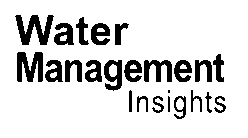Malta, a small island nation in the Mediterranean, is a stark reminder of the water scarcity challenges that Europe is increasingly facing. With no natural lakes or rivers and a climate that is hot and dry, Malta has long been forced to innovate to meet its water needs. Today, around two-thirds of its drinking water comes from desalinated seawater, blended with a minimal supply of groundwater. This is a testament to Malta’s resilience and technological prowess, but it also serves as a warning for the rest of Europe.
As climate change intensifies, water stress is becoming a more pressing issue across the continent. Around one-fifth of Europe already faces water stress annually, and this figure is expected to rise as temperatures increase and weather patterns become more unpredictable. The European Environment Agency (EEA) has warned that water demand in Europe could double by 2050, leading to severe shortages. This is not just a future problem; it’s happening now. Extreme heat and prolonged droughts, once rare, are now annual occurrences in many regions, with Central and Eastern Europe and the Mediterranean being particularly hard hit.
The first-ever European Climate Risk Assessment, released by the EEA in March 2024, paints a grim picture. It highlights how new weather extremes are disrupting ecosystems, agriculture, economic activity, human health, and water supplies. Drought and extreme heat could exacerbate existing risks, leading to water and food insecurity, disruptions of critical infrastructure, and threats to financial markets and stability.
Water scarcity is not just an environmental issue; it’s a social and political one too. As Athenais Georges of the European Water Movement advocacy group points out, “If you have scarce water, you have rising conflicts.” This is not a distant threat but a reality already playing out in other parts of the world. The Right2Water campaign, spearheaded by the European Water Movement in 2012, called on the European Commission to ensure water remains a public service and that all inhabitants enjoy the right to water. This campaign, signed by over 1.6 million EU citizens, led to the revision of the Drinking Water Directive, which entered into force in 2021. However, despite these efforts, EEA data shows that some 30% of EU citizens still suffer water scarcity every year.
The upcoming EU Water Resilience Strategy, expected to be presented in early June, is a crucial opportunity to address these challenges. The strategy is expected to focus on efficiency, water reuse, and technological fixes, particularly in sectors like industry and agriculture. However, lawmakers have called on the EU Commission to be ambitious in its update to the current water management and climate adaptation strategy. Thomas Bajada, a marine biologist and newly elected member of the European Parliament, has criticized the current strategy as “scattered, sectoral and unreactive.” He argues that the EU needs to move from promises to real, binding action.
The recent drought in Germany, with March 2024 being the driest on record, underscores the urgency of this issue. The water content of the upper layers of soil is up to 20% below the long-term minimum values, particularly in the north. This has led to calls for water conservation and raised concerns about the potential impact on agriculture and forestry. The drought has also increased the risk of wildfires and weakened trees, making them more susceptible to insect infestation.
The EU must learn from Malta’s example and innovate to meet the water challenges of the future. This means investing in desalination, smart water management, and wastewater reuse. It also means addressing the root causes of water scarcity, including pollution and the impact of climate change. As Jessika Roswall, the EU commissioner for the environment and water resilience, has said, “We want to address the root causes of water challenges.” This is not just about preserving water; it’s about preserving our way of life. The time for action is now, and the stakes could not be higher.
